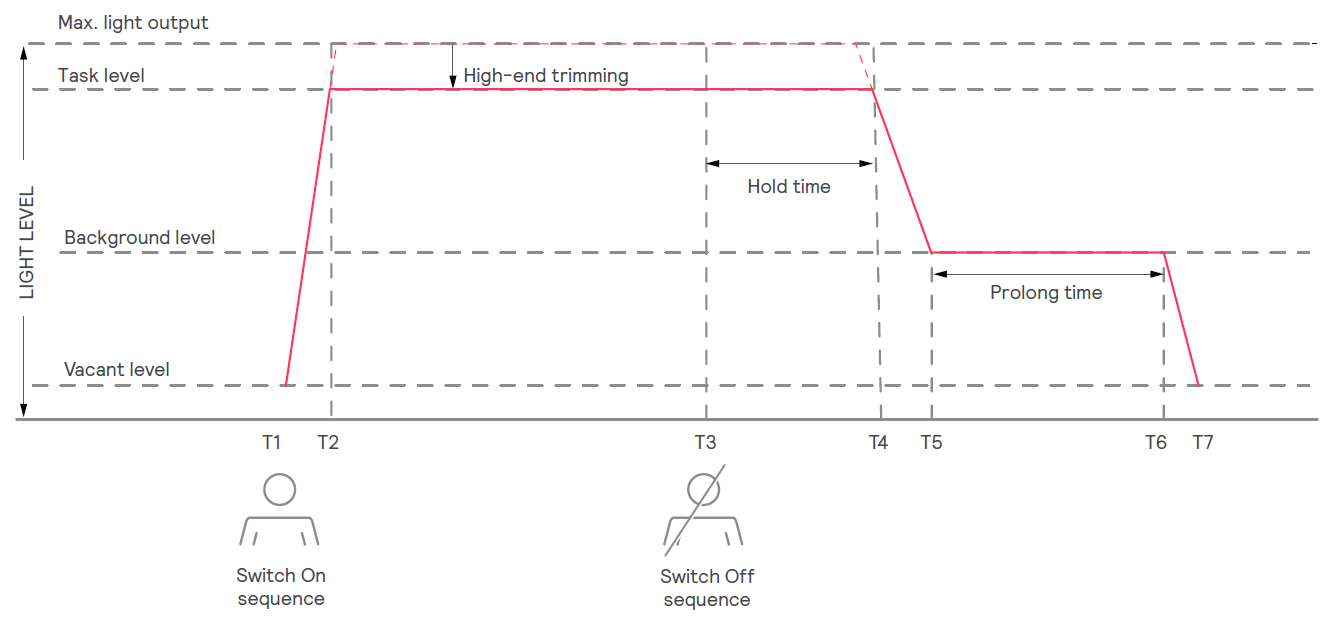Lighting behavior
This section explains the types of lighting behavior in more detail.
Occupancy based control
Auto On / Auto Off
Light points in the area are switched on in the whole area when occupancy is detected. The following types exist:
-
All light points are switched on to task level upon detecting occupancy. The task level is determined by the lumen output of the light points. Combined with the fixed grid distances, this provides the lux level on the task surface. It is critical to select the correct lumen output, as tuning the light level to the correct level is not foreseen for each area during commissioning. For daylight regulation, the task level is translated to a setpoint at the sensor by automatic calibration.
-
Light points are grouped within the area. If occupancy is detected in the group, all light points in the group are switched on to task level.
The options Prolong time and Vacant level are scheduled for a future release.

Manual control
Light points need to be switched on to task level manually on entering the room, using a manual control device such as a ZigBee Green Power (ZGP) wall switch. Upon leaving the area the automatic switch-off sequence starts.
The following types exist:
-
All light points are switched on to task level
-
Light points are grouped within the area.
If occupancy is detected in the group, all light points in the group are switched on to task level.
A manual control action (On, Off, Dim) overrides the automatic behavior, setting the light to the requested value.
Daylight dependent regulation
Light points that must respond to daylight are part of a zone together with a multi sensor, that is capable of sensing light levels and occupancy. The zone is part of a larger group with other light points.
The light points in the zone respond the same to switching events as the other light point in the group, but also respond to the light sensing capabilities of the sensor and dim to the task level (see below) when the ingress of daylight high.
In case of a failure of the wireless network and/or WG, the wireless light points will operate as usual. If the failure persists, the loss of connection is reported as an alarm.